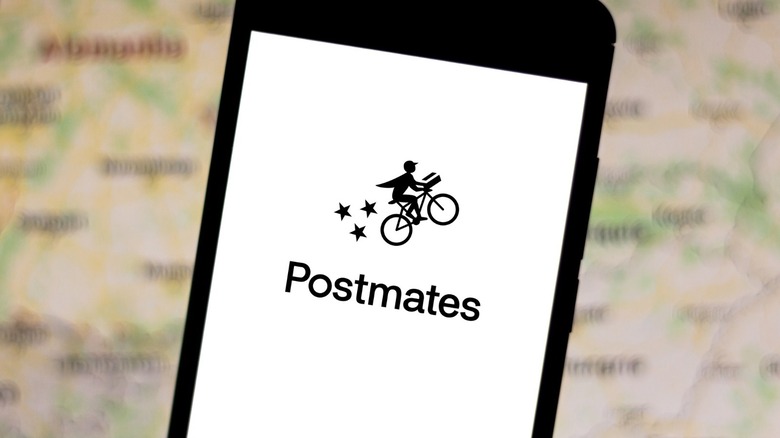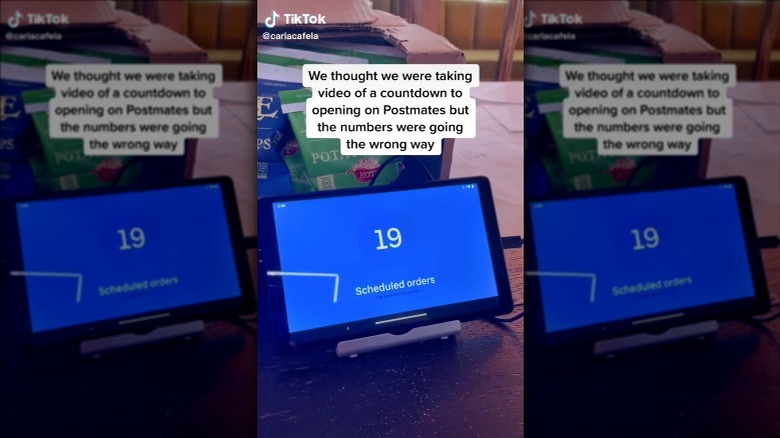Restaurant Workers Are Relating To This Postmates Order Pileup TikTok
"We thought we were taking a video of a countdown to opening on Postmates, but the numbers were going the wrong way." Thus reads the text for a video that the Los Angeles-based Carla Cafe uploaded to TikTok. In the recording, we see the number of scheduled orders steadily rise from 16 to 29 before any actual details for those orders appear on the screen. "Restaurant workers know the struggle," they wrote knowingly in the description.
As of writing, the video has accrued around 430K views. Of those, most agreed with the sentiment. The most liked comment reads "This is physically painful to watch." A few viewers were confused by everyone else's reaction. After all, more orders means more business, right? "Have you never worked in a restaurant before?!" came the retort. "27 different orders at once is literally impossible." By ordering via an app, the customer can have the expectation that their order will be addressed immediately, whereas if they were in the café and could see all the other customers, they might not anticipate the same speed. Moreover, workers then have to deal with impatient Postmates delivery riders who are understandably aggravated about how their income — which depends on number of deliveries made — is being held up by a backlog of orders.
One solution to this was offered: "All they have to do is fix the app settings. They can make it not take orders when they are closed." At least that would staunch the flow before food can be prepared.
It's an industry-wide transition
Even businesses that are theoretically equipped to address massive amounts of orders have struggled with the society-wide transition to delivery apps.
The ongoing push to unionize Starbucks outlets was driven not just by generally poor work conditions, but also by heightened demand driven by delivery apps. "Technology was made for customers and not for employees," Casey Moore, one of the main proponents for the successful union drive in Buffalo, told Reuters in December. "Without a union we haven't been able to voice how the technology could also work for us." In concrete terms, Reuters detailed how Starbucks' holiday tumblers caused such high traffic on the delivery apps that the store fell behind by 40 minutes, and 30 drink orders were abandoned by their customers.
This is the norm for most fast food. "Most online orders are massive," an anonymous Sonic worker described to Modern Retail, "and there's no way to cancel them. The system still gives them priority, so now we're swamped and there's nothing to do but work our butts off. Drive-thru times regularly reach about 10 minutes during this."
Considering how, as Yahoo! Finance relays, some expect the global online food delivery market to more than double in value to $223.7 billion by 2027, the need for businesses to navigate the more hectic aspects of online ordering becomes self-evident. Unless, of course, they are fine with burning out their entire workforce and then complaining about a labor shortage afterward.

